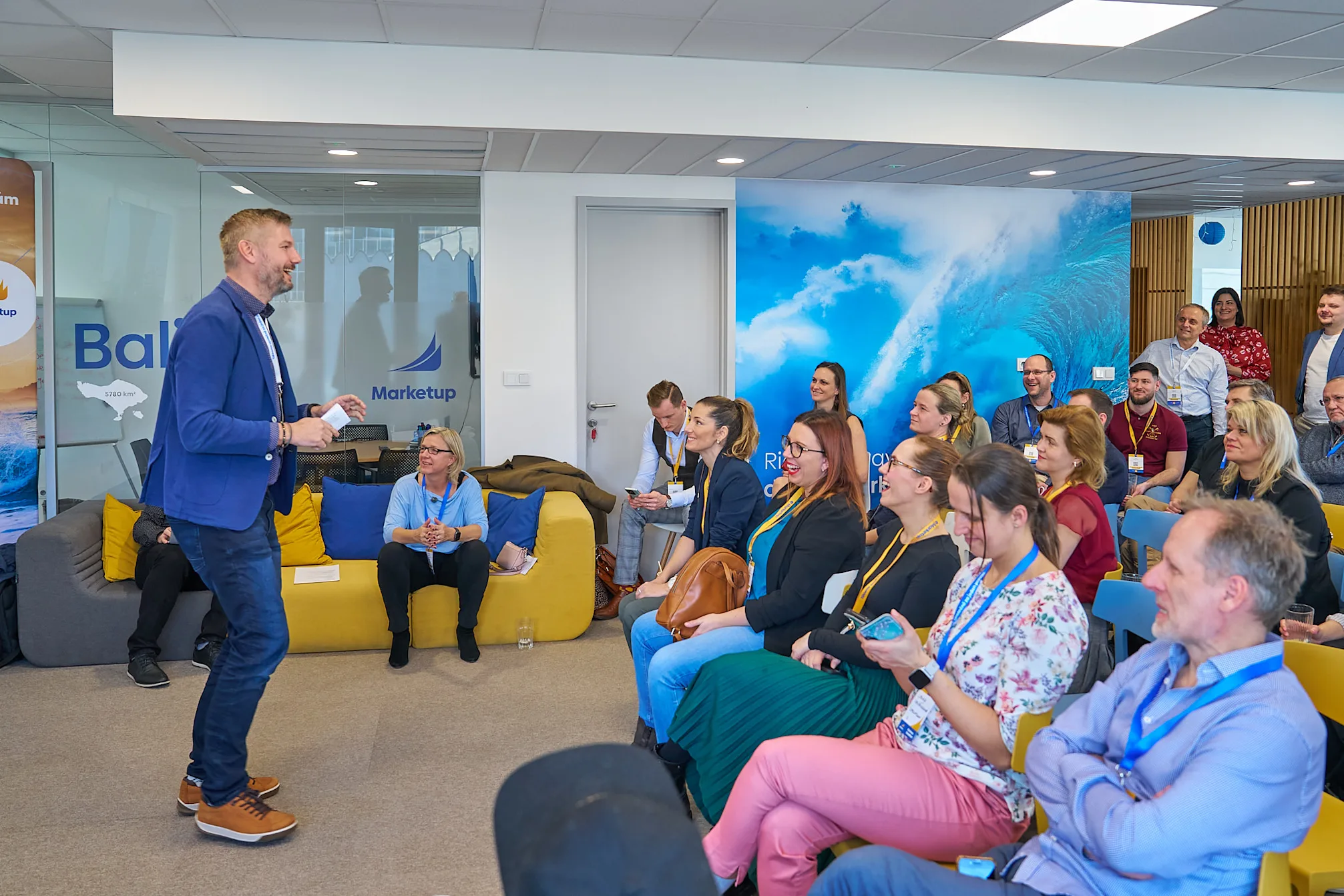Gabriela Martinčeková
24. 3. 2025
Read more


When Apple introduced the first generation of the iPod music player in 2021, there were already plenty of competitors on the market. Yet within just two years, the new product captured more than a third of the market, and a year later, it surpassed a 60% share. Of course, many factors contributed to its success. But one of them was its fresh communication. No boring lists of technical specifications – the slogan that broke through spoke of “1,000 songs in your pocket.”
It’s no surprise that in 2024, Steve Jobs made the front pages of magazines as the creator of the music player everyone was talking about. But of course, the media soon began looking for the next Steve Jobs. That person was supposed to be Elizabeth Holmes, who took her startup Theranos from nothing to a valuation of 10 billion dollars.
Her story was fascinating: she became the youngest self-made billionaire, and her idea of analyzing health using just a single drop of blood on a patented chip in “wellness centers” across the United States was celebrated as a groundbreaking innovation.
That is, until it turned out things were a bit different—her technology didn’t work as she claimed, and the entire company collapsed, plummeting from billions straight back to zero.

A passing fad or a real trend?
Of course, this is an extreme example where the pressure to succeed with an innovation turned into a literal criminal drama. In most projects, innovation failures are less dramatic—but still significant.
An analysis by the research company Kantar shows that when it comes to product innovations in the food industry, only 3% are truly successful in their second year after launch.
36% show a growing trend, but 31% are declining, 12% are nearing extinction, 6% end in their second year, and 12% don’t even make it to the second year.
If we add up the numbers, 61% either disappear or struggle.

What’s behind it?
It could be flawed assumptions about market development. As Bill Gates once said: “People overestimate what will happen in the next two years and underestimate what will happen in ten.” A hot topic in the food industry right now is the “Dubai chocolate” phenomenon, which has inspired many companies to create their own versions and variants. But will it still be relevant a year from now? Let’s recall the Prime drinks craze, which briefly sent prices soaring—yet now we see the products in discount bins. The most common reason for failure, however, is an unclear value proposition—when it’s not obvious why people should even want the innovation. Missing or flawed marketing communication, unmet customer expectations, or underestimating competitors’ actions also play a role.
How to win over flexitarians
One of the companies that sensed the shift of the times is Beyond Meat. Founded by Ethan Brown, the company’s motivation was to create a meat substitute that matches real meat in taste, texture, and consistency—while significantly reducing the planet’s resource consumption and emissions. Instead of feeding plants to animals first, the products go straight to the end consumer. The brand illustrated this by comparing its plant-based burger to a traditional hamburger, all under the umbrella slogan: “Better for you, better for the planet.”

The strategic move in this case was focusing not only on vegetarians and vegans, but also on so-called flexitarians – people who do eat meat but want to reduce their consumption.

Everything seemed like the perfect formula for success, and when the company went public in 2019 as the first of its kind, it was met with phenomenal response. In a very short time, the stock price soared from the initial $25 to more than six times that amount. The Financial Times wrote that Beyond Meat was heading “to infinity and beyond.”

After the rise, however, came the fall, and now the stock price has been hovering around three dollars for a long time. Glowing headlines were replaced by reports that consumer preferences had shifted: people still want to reduce their meat consumption, but at the same time are also avoiding additives and highly processed foods. The future may still belong to plant-based meat alternatives—but that doesn’t necessarily include companies like Beyond Meat.
A boring category? An opportunity! A different story is being written by ketchup maker Heinz, which expanded into the neighboring pasta sauce category in the UK market. Marketers noticed that although the shelves were full of sauces, they were interchangeable and lacked any real communication. Boring? That’s an opportunity for brands that approach communication differently. Heinz leaned into the absurdity of entering a category it “obviously” belonged in—so late. The tone, in which the brand didn’t take itself too seriously, resonated perfectly with the audience.
Whether it was part of the plan or not, the brand also benefited from a lucky break: top model Gigi Hadid posted on social media asking Heinz to create a kind of Bloody Mary-style sauce—a blend of sauce and vodka. The brand listened and teamed up with Absolut. Their joint product became a viral hit, and Heinz’s entry into an already saturated category turned out to be its most successful innovation ever.
It turns out that creative communication, which allows a brand to stand out, can indeed increase the chances of innovation success. However, it’s essential to take into account the brand’s DNA—and it certainly helps if the brand is already well-liked and trusted by customers. One of the principles of evidence-based marketing is that large brands automatically have a competitive advantage in communication.
Another widely discussed area is research—especially when it comes to innovation, it’s important to be cautious about what customers say versus how they actually behave. That’s why subconscious signals from potential customers are increasingly being taken into account. You might hear the saying, “The checkout is still the best test.” However, this is a more expensive route, as by that point you’ve already invested in the entire marketing mix—from product development and pricing to distribution and communication. That’s why testing still makes sense—as an opportunity to reduce risk and avoid unnecessary costs.
This article was prepared based on a presentation for the Retail Summit.


